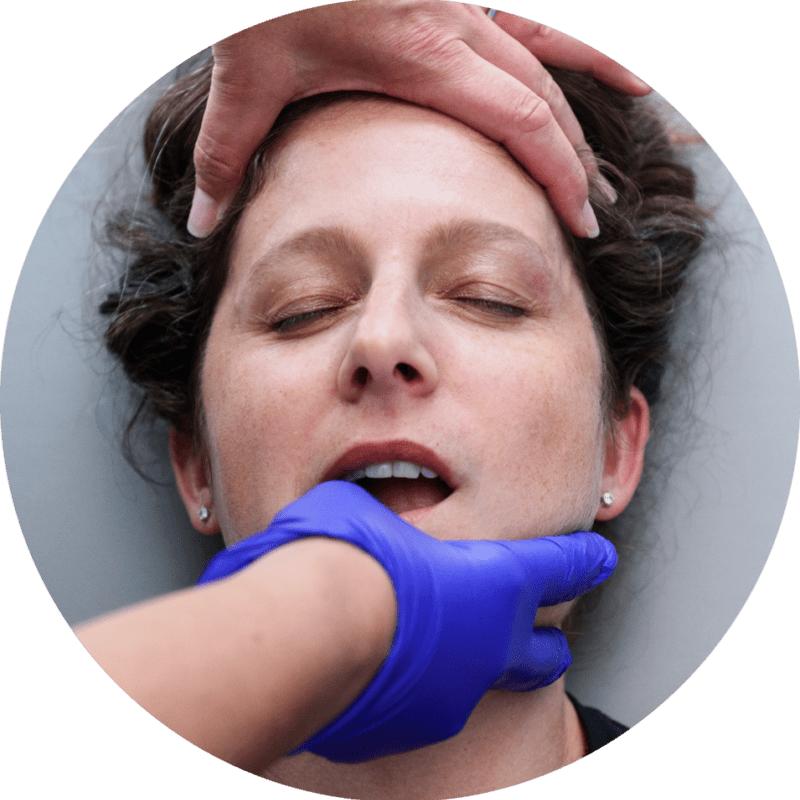TMD Physical Therapy
Temporomandibular joint disorder (TMD) is a common condition that limits the natural function of the jaw, such as opening the mouth and chewing, and can cause pain. The temporomandibular joint (TMJ) is a hinge joint that connects your jaw to your skull in front of your ear. The TMJ guides jaw movement and allows you to open and close your mouth and move it from side to side to talk, yawn, or chew.

TMD can be caused by:
-
- Bad posture habits. One of the reasons TMD is so common is because many of us spend a great deal of time sitting at a desk, where we often hold our heads too far forward as we work. But there are many other kinds of bad postures related to the “forward head position” which put a strain on the muscles, disc, and ligaments of the TMJ. The jaw is forced to “rest” in an opened position, and the chewing muscles become overused.
- Chronic jaw clenching (“bruxism”). Many people clench their jaws at night while they sleep, often because of stress. Some clench their teeth throughout the day as well, especially when dealing with stressful situations. This causes overuse through the muscles of the jaw and neck.
- Problems with teeth alignment (“malocclusion”). If your teeth are positioned in an unusual way, greater stress is placed on the TMJ when performing everyday jaw motions, such as chewing.
- Fracture. In a traumatic accident involving the face or head, a fracture to the lower jaw may result and cause TMD.
- Trismus (“lockjaw”). This condition can be both a cause and a symptom of TMD.
- Displacement of the disc or soft-tissue cushion located between the ball and socket of the TMJ, which causes popping or clicking of the jaw and, frequently, pain.
How does it feel?
The symptoms of TMD can be temporary or last for years. Jaw pain is the most common symptom.
TMD can cause the jaw to lock or get stuck in a certain position. You may experience headaches, feel pain when chewing certain foods, or have difficulty fully opening your mouth.
TMD Symptoms Include:
Headache
Popping sounds in your jaw
Neck pain
Locking jaw
CAUTION: Jaw pain also can be a symptom of heart attack. Seek medical care immediately if jaw pain is accompanied by:
Chest pain
Shortness of breath
Dizziness
Left arm pain
Numbness in the left arm
Nausea
Jaw pain
Jaw fatigue
Difficulty opening your mouth to eat or talk
Ringing in your ears
Dizziness
How Is TMD Diagnosed?
Your physical therapist will evaluate your posture and observe how your cervical spine—the upper portion of your spine, situated in your neck—moves. Additionally, we will examine your TMJ to find out how well it functions and whether there are any abnormalities in your jaw motion.
If, after the examination, your physical therapist suspects that your pain is a result of the position (“alignment”) of your teeth, the therapist will refer you to your dentist for further examination.
How Can a Physical Therapist Help?
Your physical therapist can help you restore the natural movement of your jaw and decrease your pain. Based on your condition, your therapist will select treatments that will work best for you. Your TMJ Physical Therapy treatments may include:
Posture Education
Improving Jaw Movement
Referral to a Dentist (if necessary)
